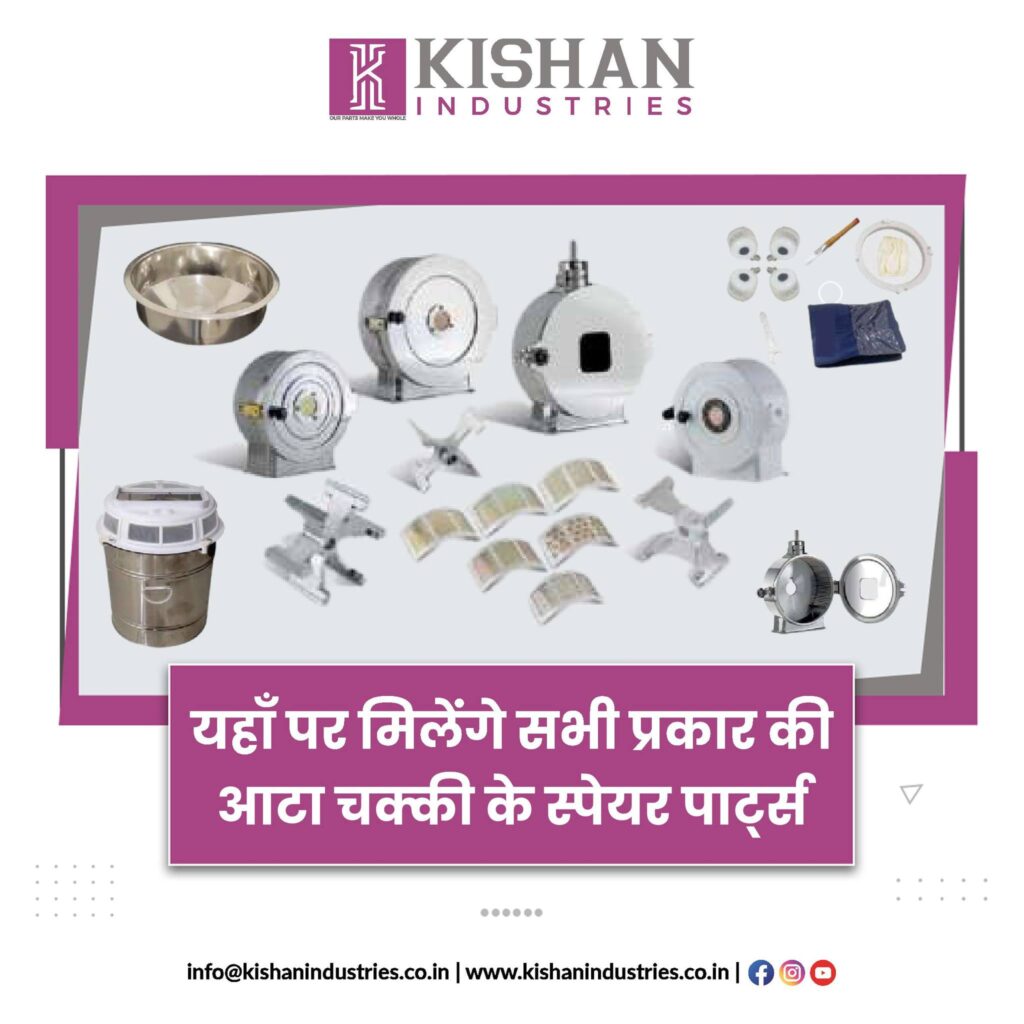Flour mills are important in food processing, milling the flour used in making food products like bread and pasta.
When it comes to spare parts, these are quite important for keeping flour mills, warding off downtime, and guaranteeing flour quality.

Here in this blog, we will cover the significance of spare parts in flour mills and different spare parts for you.
What is Flour Milling
- These mills are food processing facilities that mill into flour through a mechanical process.
- Flour mills come in different models and types, including stone mills and roller mills, each with its unique milling methods.
- Primary parts of flour mills include grinding mechanisms, storage hoppers, sifters, and conveyors.
Role of Flour Mill Spare Parts
1. Spare parts are crucial for uninterrupted flour mill operations, facilitating consistent production.
2. Downtime in flour mills can disrupt production, leading to product shortages and financial losses.
3. Proper spare parts maintenance is cost-effective, reducing the need for expensive emergency repairs and enhancing long-term efficiency.
Essential Flour Mill Spare Parts
- Rollers and Bearings
Rollers and bearings are important for smooth flour milling, providing stability and reducing friction.
These come in various types and materials, including steel, nylon, and ceramic, each suited to different milling needs.
- Screens and Sieves
Screens and sieves are there to separate and classify flour particles, ensuring product consistency.
These components are available in different sizes and materials, including stainless steel and mesh, catering to specific milling requirements.
- Belts and Chains
Belts and chains are liable for power transmission within the mill, ensuring the machinery operates effectively.
Maintenance involves regular inspections, lubrication, and tension adjustments. Replacement is necessary when these components show signs of wear and tear to prevent breakdowns.
- Motors and Electrical Components
Motors and electrical components are critical for powering and controlling the various machinery in flour mills.
Flour mills utilize different types of motors, such as electric and diesel engines. Maintenance involves regular checks for wear, insulation, and electrical connections to ensure optimal performance.
- Dust Collector Components
Dust collectors are necessary for maintaining a clean and safe working environment in a flour mill. They help capture airborne dust particles, which can be a health hazard and contribute to equipment wear.
Dust collector components include filters, bags, and extraction fans. Filters and bags trap fine particles, while extraction fans create airflow to carry these particles away from the milling area.
Regular maintenance of these components is essential to prevent the buildup of dust, ensuring worker safety and prolonging equipment life. Proper dust collection also contributes to the overall hygiene and quality of the flour produced.
- Lubrication Systems
Proper lubrication in flour milling is of utmost importance, as it reduces friction, minimizes wear and tear, and extends the lifespan of critical components, such as rollers and bearings.
This, in turn, enhances overall milling efficiency and ensures consistent flour quality. Flour mills employ various lubrication systems, including manual, automatic, and centralized systems, each requiring regular maintenance to prevent breakdowns, minimize operational costs, and support continuous, trouble-free flour production.
Tips for Maintenance of Flour Mill Spare Parts
1. Regular Inspection and Cleaning: Regularly inspect spare parts for any signs of damage, wear, or contamination. Cleaning components such as screens, filters, and bearings can prevent clogs and ensure smooth operation.
2. Lubrication and Greasing: Implement a consistent lubrication schedule to keep essential parts adequately greased, reducing friction and extending their lifespan. Different components may require specific types of lubricants, so ensure you use the right ones.
3. Monitoring Wear and Tear: Keep a close eye on the wear and tear of critical components like rollers and belts. Establish a maintenance schedule to replace these parts before they fail, minimizing downtime.
4. Keeping an Inventory of Spare Parts: Maintain an organized inventory of spare parts, ensuring that replacements are readily available when needed. This practice reduces downtime and ensures efficient repairs.
5. Training and Safety Measures for Mill Operators: Train mill operators in proper maintenance procedures and safety protocols to prevent accidents and ensure that spare parts are handled correctly. Safety measures, such as lockout-tagout procedures, are essential to protect workers during maintenance activities.
Sourcing Quality Flour Mill Spare Parts
1. Where to Buy Flour Mill Spare Parts: Find out various sources for purchasing spare parts, including manufacturers, local suppliers, and online marketplaces. Consider the pros and cons of each option.
2. Considerations for Choosing Suppliers: Discuss important factors to consider when selecting spare part suppliers, such as reputation, reliability, cost, and the availability of a wide range of components.
3. The Importance of OEM Parts vs. Aftermarket Parts: Explain the differences between Original Equipment Manufacturers (OEM) and Aftermarket spare parts, highlighting the advantages and disadvantages of each option to help readers make informed decisions when sourcing parts for their flour mills.
Synopsis
Flour mills play a crucial role in the food industry, converting grains into flour, a staple ingredient in various cuisines worldwide. Maintaining these mills in top condition is essential for ensuring efficient operation, consistent quality output, and preventing costly downtime. Spare parts, the lifeblood of flour mills, are indispensable in achieving these objectives.
Essential spare parts encompass a wide range of components, each serving a specific function in the milling process. From grinding chambers and sifting systems to drive mechanisms, these components work in sync to produce the desired flour consistency. Regularly inspecting and replacing worn-out spare parts is crucial for maintaining optimal mill performance and preventing disruptions.
Prioritizing spare parts maintenance is not just a matter of cost-efficiency; it’s an investment in the overall health and productivity of your flour mill. By proactively addressing potential issues and keeping essential spare parts readily available, you can minimize downtime, maximize output, and ensure the consistent production of high-quality flour.





